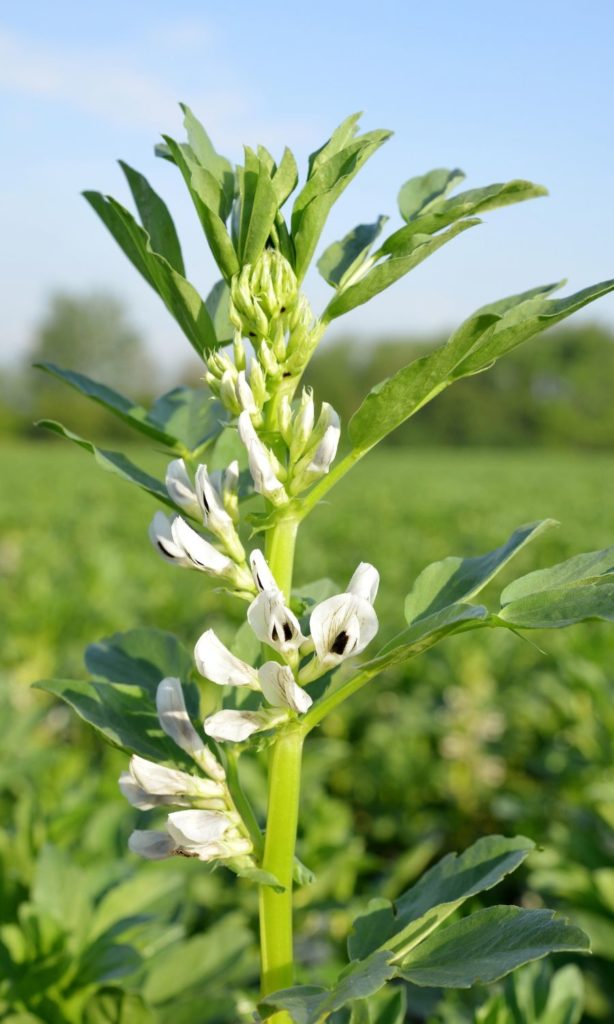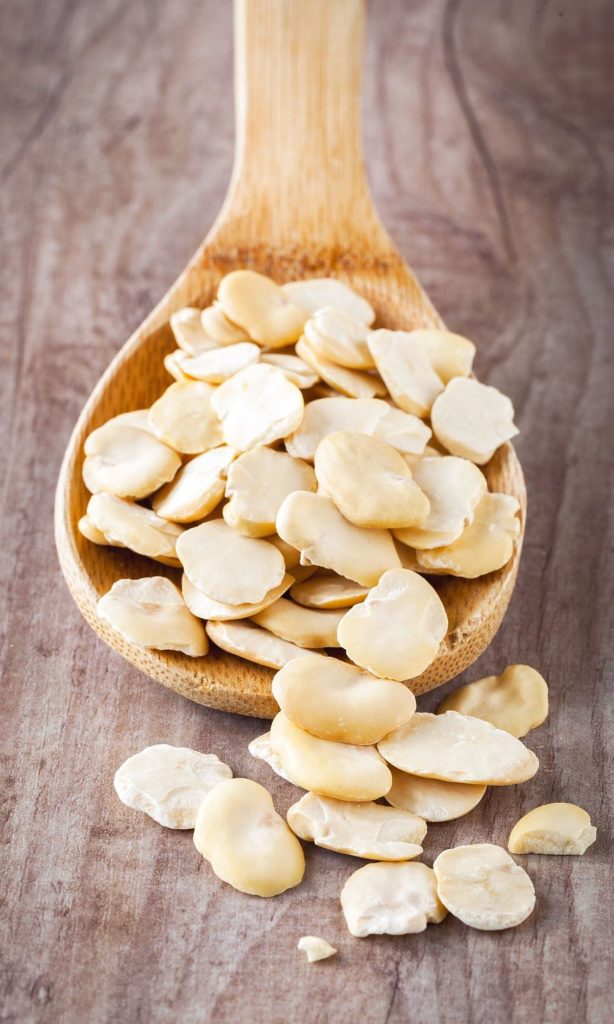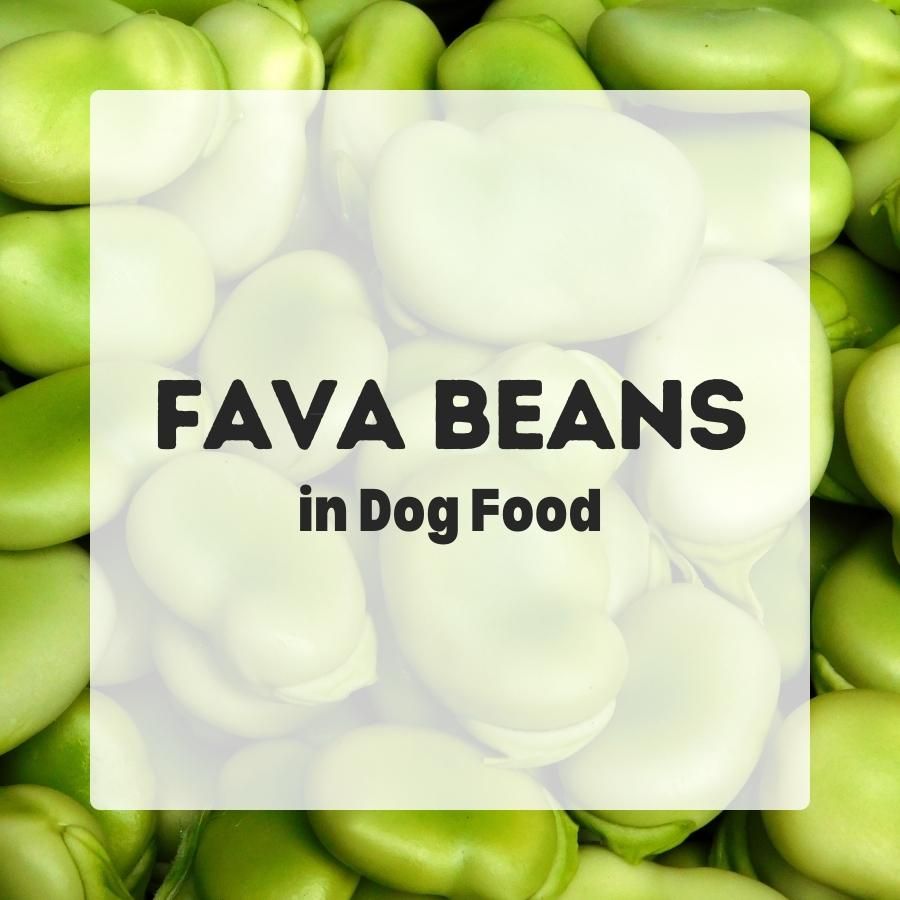Fava beans in dog food are a novel ingredient. Like all legumes they are poorly researched but can be a good source of plant-based protein and carbohydrates when used in moderation.
Contents
What are Fava Beans?
Fava beans are a type of legume, they are also known as broad beans, faba beans, field beans, or horse beans.
Fava beans are among the oldest crops in the world.

They had been cultivated in the Middle East for 8000 years before they spread to Europe, North Africa, and Asia[3].
They are large, flat, green beans that are commonly eaten in dishes such as soups, stews, or salads. According to official definitions, they are not officially beans but vetches.
Fava Beans in Pet Food
It is generally safe to feed fava beans to dogs in moderation.
Faba beans are increasingly popular in human nutrition but have not yet been explored in pet foods. Only very few manufacturers include fava beans in their products at this point.
Faba beans are a source of plant-based protein. They also provide minerals, fiber, and energy as they are high in carbohydrates.
A 2020 study analyzed different protein ingredients and found faba bean protein to be quite low in methionine (0.78%), an essential sulfur-containing amino acid[6].
This is a typical problem with pulses and makes it necessary to combine them with other proteins to balance things out.
Fava beans are low in fat and their fatty acid profile is mainly composed of linoleic acid and linolenic acids (omega fatty acids).
Fava beans are overall a poor source of vitamins but contain some water-soluble B vitamins.
Are Fava Beans Ok For Dogs?
The use of fava beans in dog food is not well understood[1].
Fava beans share common problems with other legumes:
Fava beans are low in methionine and cysteine which are essential sulfur-containing amino acids[6].
Fava beans in dog food need to be supplemented with another amino acid source that fills this gap.
They also contain various anti-nutritional factors such as tannins, glycosides (vicine and convicine), phytates, lectins, and compounds that can inhibit digestive enzymes.
De-hulling gets rid of most of the tannins[2]. And dog food processing like extrusion or cooking reduces the activity of anti-nutritional factors in the beans. Just don’t ever feed them raw.
One problem with fava beans in dog food is that they are a novel ingredient. We don’t know too much about their nutritional value or how they react to pet food processing methods.
Other pulses like peas or lentils have been linked to diet-related heart problems in dogs. So naturally, we don’t have too much confidence in other legumes either.

One 2020 study showed that dogs can tolerate fava beans in their diet, but that too much of it (>20%) can reduce palatability and makes them poop softer and more often[1].
Overall, the study suggests that fava beans can be a good ingredient for dog food but should be used in moderation.
Moderate amounts of fava beans are likely ok and might even be beneficial since legumes are high in resistant starches. But we recommend avoiding foods that use them as a major ingredient.
If you are unsure about feeding fava beans to your dog or have any concerns, it is always best to consult with a veterinarian first.
Further Reading
[1] Corsato Alvarenga et al. Evaluation of faba beans as an ingredient in dog diets: apparent total tract digestibility of extruded diets with graded levels of dehulled faba beans (Vicia faba L.) by dogs. Journal of Animal Science. 2020. https://doi.org/10.1093/jas/skaa085
[2] Corsato & Aldrich. The Effect of Increasing Levels of Dehulled Faba Beans (Vicia faba L.) on Extrusion and Product Parameters for Dry Expanded Dog Food. Foods. 2019. https://doi.org/10.3390/foods8010026
[3] FAO 2017. Pulses and their by-products as animal feed (PDF). Chapter 3: Broad Bean.
[4] AAFCO Official Publication. Chapter 6. Free Access.
[5] Feedipedia: Faba bean (Vicia faba). 2015
[6] Reilly et al. Use of precision-fed cecectomized rooster assay and digestible indispensable amino acid scores to characterize plant- and yeast-concentrated proteins for inclusion in canine and feline diets. Translational Animal Science. 2020. https://doi.org/10.1093/tas/txaa133
